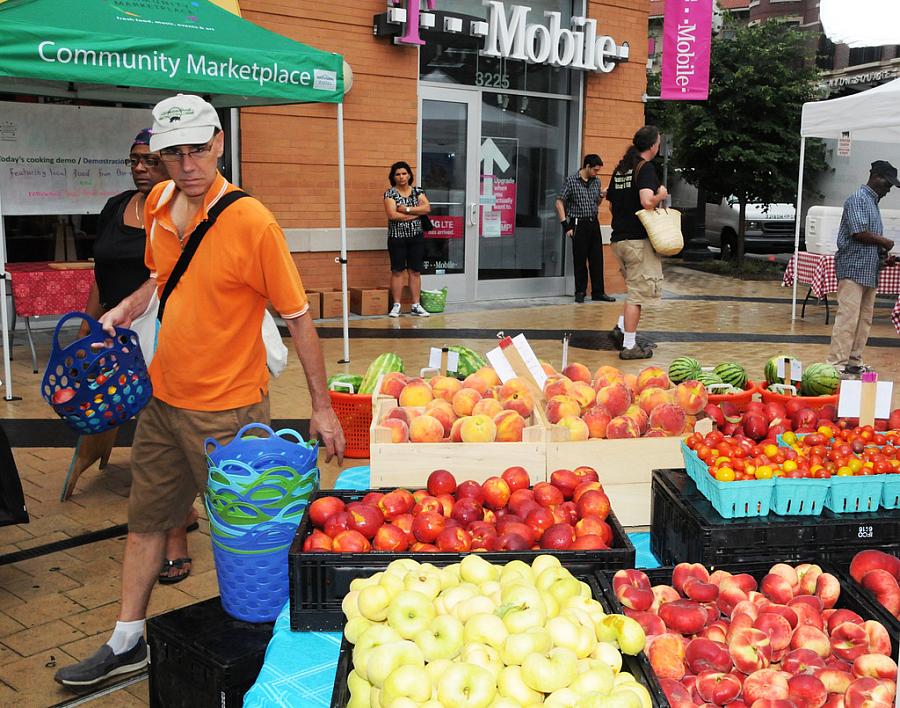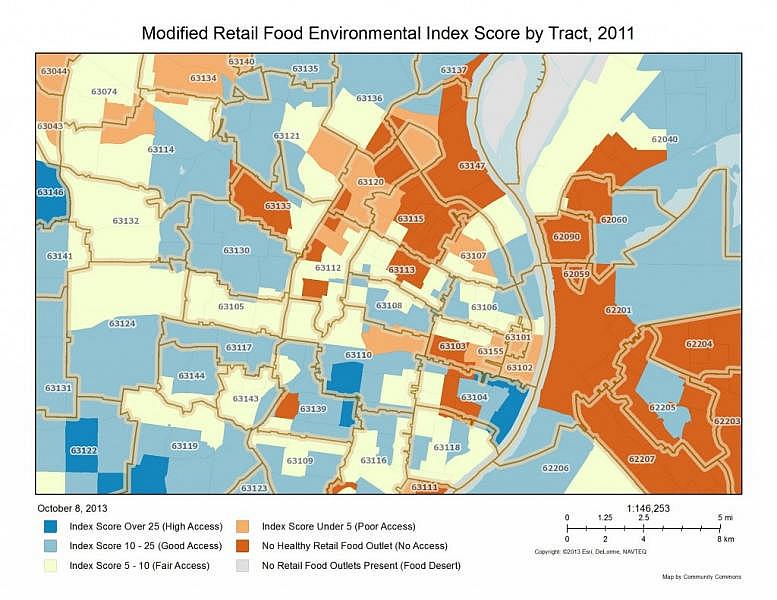5 Strategies to Create Small-Scale Healthy Food Retail

Many low-income families live in places where there are many corner stores and few grocery stores. Growing evidence suggests that creating economically sustainable small stores could do a lot to improve health and economic outcomes in communities with the greatest need.
Over the last decade, advocates have learned five categories of corner store interventions do the most to make those stores healthier:
Encourage stocking multiple healthy options

The most common approach to healthy corner store conversion is to encourage store owners to stock healthier options across multiple product categories—from frozen foods to baked goods and beyond.
In Philadelphia, The Food Trust developed a program that now reaches more than 500 stores and provides a menu with categories of recommended store items. Store owners are encouraged to select the healthier items they believe will sell and to steadily integrate healthier foods into their inventory.
Focus on a single product category
Several programs have targeted a single product (most commonly milk) or a single product category (most often produce) as a way to promote healthier stores across larger geographic areas. Typically programs that focus on a single item or product category develop in-store marketing campaigns to promote them.
New York City’s Moooove to 1% Milk program provided promotional materials to bodega customers and encouraged stores to stock lower-fat products. After the intervention, 21 percent of the more than 1,000 participating stores began stocking low-fat milk for the first time and 45 percent reported an increase in low-fat milk sales. The city then launched a similar program with more than 500 stores: Move to Fresh Fruits and Vegetables focused on getting more produce into corner stores.
Develop new stores
In several communities, advocates have built their own healthy corner stores from the ground up.
In Atlanta, two community activists started The Boxcar Grocer in a low-income community of color. In Oakland, Calif., a local nonprofit business incubator, Mandela MarketPlace, started a worker-owned cooperative that offers affordable, local, and organic options in a diverse, low-income neighborhood. New stores present an opportunity to design a retail environment based on healthy priorities, dramatically influencing its look and feel.

Locate ideal locations for new stores with this Community Commons map. Simply enter your location and get a snapshot or your community’s needs. Make your own map here.
Healthy corner stores certification programs
A number of municipalities have developed certification programs for participating corner stores. These programs require participating stores to increase the variety of healthy foods they sell, proactively market them, and reduce unhealthy offerings. In return, the sponsoring agency provides incentives such as help complying with program standards, free in-store promotional materials, free advertising in the community and at city-sponsored events, and access to business loans or grants.
For example the Douglas County (Neb.) Healthy Neighborhood Store program connects store owners to the University of Nebraska agriculture extension office, which provides training on stocking produce, pricing, and marketing.
A healthy corner store certification program requires the store operator to commit to increasing healthy offerings, and the sponsoring agency to provide specific support.
Restricting the sales of unhealthy products
Although most healthy corner store programs focus on increasing healthy options, some programs focus specifically on reducing the number of unhealthy items on the shelves. For instance, many corner store programs ask store owners to voluntarily remove alcohol and tobacco advertising. Others request that store owners display junk food and sugar-sweetened beverages less prominently.
Youth involved with Market Makeovers in Los Angeles worked with store owners to replace signs, racks, and shelves of unhealthy products at the front of the store with a simple, appealing display of produce.

Voluntary programs that ask store owners to reduce in-store marketing have been difficult to maintain because tobacco and alcohol companies provide incentives to store owners for promoting their products. In response, a few communities are experimenting with policy interventions that limit unhealthy products in corner stores.
In Minneapolis, for example, as part of the business licensing process for store owners, the city of Minneapolis requires corner stores to stock a certain amount of fresh produce. This may limit the space available for unhealthy food and other products.
Communities may also implement policy strategies that affect the placement or price of food and beverages so consumers are encouraged to purchase healthier products. For example, certain policies could create incentives that lead store owners to place highly processed, high-fat, high-sugar foods at the back of their store or on less accessible shelves. As of now, interventions that address price, location or nutritional content of products are limited, and more research is needed to understand their feasibility and real impact.
Though many communities have found success with these five approaches, there is more work to be done. To create a sustainable business model for small-scale healthy food retail in low-income neighborhoods across the United States, we need to continue evaluating the long-term economic viability and health effects of corner store interventions. ChangeLab Solutions looks forward to continuing to lead and participate in those strategic conversations as we all work together to make more healthy food and beverages available to all.
ChangeLab Solutions offers an array of tools to help bring more healthy food retail to your community, including Toward a Sustainable Model for Small-Scale Healthy Food Retail & Health on the Shelf: A Guide to Healthy Small Food Retailer Certification Programs.
Photo Credits: Flickr-USDAgov, The Food Trust, Market Makeovers
This post was originally posted on CommunityCommons.org and has been republished here with permission.
Related Stories:

